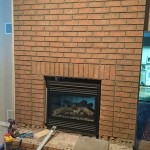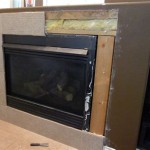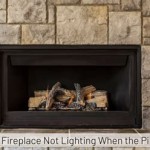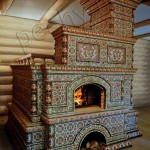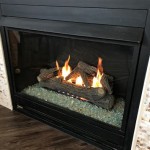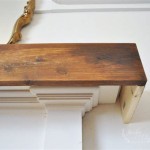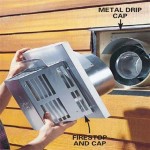The Rise of the Indoor Portable Fireplace: A Guide to Features, Benefits, and Considerations
The concept of a fireplace has long been associated with warmth, comfort, and a sense of home. Traditionally, fireplaces were permanent fixtures, requiring significant construction and dedicated spaces. However, advancements in technology and design have led to the emergence of the indoor portable fireplace, offering a flexible and convenient alternative for those seeking the ambiance of a fire without the constraints of a traditional setup.
Indoor portable fireplaces provide a compelling solution for individuals living in apartments, condos, or homes without existing fireplace infrastructure. They also cater to those who desire the option of easily moving the fireplace from room to room, allowing for adaptable heating and aesthetic enhancement throughout the year. These devices come in various styles, fuel types, and sizes, presenting a diverse range of options to suit individual preferences and spatial requirements. This article elucidates the key features, benefits, and important considerations associated with indoor portable fireplaces, providing a comprehensive overview to aid in informed decision-making.
Understanding Fuel Types and Their Implications
One of the most significant distinctions among indoor portable fireplaces lies in the type of fuel they utilize. The choice of fuel directly impacts the fireplace's heat output, operational costs, environmental impact, and overall user experience. The most common fuel types include electric, ethanol, and gel, each with its unique characteristics.
Electric fireplaces operate by simulating the appearance of flames using LED lights and reflective surfaces. They require a standard electrical outlet and produce heat through an internal heating element. The primary advantage of electric fireplaces is their convenience and ease of use. They do not produce any emissions and are relatively safe, making them suitable for households with children or pets. Heat output can typically be adjusted via a thermostat, and some models offer supplemental features such as remote controls and timers. However, electric fireplaces generally do not produce the same level of radiant heat as other fuel types and may not provide a completely realistic flame appearance.
Ethanol fireplaces utilize liquid ethanol, a renewable fuel derived from plant materials, to produce a real flame. These fireplaces are ventless, meaning they do not require a chimney or flue, allowing for greater placement flexibility. Ethanol fireplaces offer a more authentic flame appearance and generate a noticeable amount of heat. However, ethanol fuel can be more expensive than electricity, and its availability may vary depending on location. Furthermore, ethanol fireplaces require proper ventilation to prevent the buildup of carbon dioxide, and users must exercise caution when refilling the fuel reservoir to avoid spills or fires.
Gel fireplaces burn a gel fuel composed primarily of isopropyl alcohol and thickeners. Similar to ethanol fireplaces, gel fireplaces are ventless and produce a real flame. They offer a relatively clean burn with minimal odors or emissions. Gel fuel is typically sold in cans, making it easy to store and handle. However, gel fireplaces generally produce less heat than ethanol fireplaces, and the flame appearance may not be as realistic. Users must also be mindful of potential flare-ups when extinguishing the flame and should follow the manufacturer's instructions carefully.
Evaluating Safety Features and Certifications
Safety is paramount when considering any heating appliance, and indoor portable fireplaces are no exception. It is crucial to evaluate the safety features offered by different models and to ensure that the fireplace meets relevant safety standards and certifications. These features and certifications provide assurance that the device has been tested and proven to operate safely under normal conditions.
Overheat protection is a common safety feature found in electric fireplaces. This mechanism automatically shuts off the fireplace if it detects excessive heat buildup, preventing potential fires. Some models also include tip-over protection, which cuts off the power supply if the fireplace is accidentally knocked over. These features are particularly important for households with children or pets, where accidental contact with the fireplace is more likely.
For ethanol and gel fireplaces, spill prevention mechanisms are crucial. These may include absorbent materials within the fuel reservoir to minimize spillage in the event of a tip-over. Additionally, some models feature flame guards or screens to prevent accidental contact with the open flame. It is imperative to follow the manufacturer's instructions for safe operation, including proper ventilation, fuel handling, and flame extinguishing procedures.
Look for certifications from recognized testing organizations such as UL (Underwriters Laboratories), CSA (Canadian Standards Association), or ETL (Intertek Testing Laboratories). These certifications indicate that the fireplace has undergone rigorous testing to meet established safety standards for electrical safety, fire resistance, and emissions. Purchasing a certified fireplace provides a greater level of confidence in its safety and reliability.
Assessing Design, Aesthetics, and Placement Considerations
Beyond functionality and safety, the design and aesthetics of an indoor portable fireplace play a significant role in its overall appeal and suitability for a particular space. These fireplaces are available in a wide array of styles, from traditional to contemporary, allowing consumers to select a model that complements their existing décor. Careful consideration of the fireplace's size, shape, and materials is essential to ensure a cohesive and harmonious integration into the surrounding environment.
Portable fireplaces are manufactured using various materials, including metal, wood, glass, and stone. Metal frames provide a sleek and modern look, while wood accents offer a more traditional and rustic feel. Glass panels can enhance the visibility of the flames and create a sense of openness, while stone veneers add texture and visual interest. The choice of materials should align with the overall aesthetic of the room and the user's personal preferences.
Placement considerations are equally important. While portable fireplaces offer greater flexibility compared to traditional models, it is still necessary to consider clearances from flammable materials such as curtains, furniture, and rugs. Manufacturers typically specify minimum clearance requirements in their product manuals, and it is crucial to adhere to these guidelines to prevent potential fire hazards. Furthermore, the fireplace should be positioned in a location that allows for unobstructed viewing of the flames and easy access for refueling or maintenance. For ethanol and gel fireplaces, ensuring adequate ventilation is paramount to prevent the buildup of carbon dioxide and other combustion byproducts.
The size of the room is another crucial factor. A fireplace that is too large can overwhelm a small space, while one that is too small may not provide sufficient heat or visual impact in a larger room. Consider the BTU (British Thermal Unit) output of the fireplace, which measures the amount of heat it produces per hour. A general rule of thumb is to select a fireplace with a BTU output that is appropriate for the size of the room to be heated. It is also worth noting that some models offer adjustable heat settings, allowing for greater control over the temperature.
Ultimately, the selection of an indoor portable fireplace involves a careful evaluation of fuel type, safety features, aesthetics, and placement considerations. By thoroughly researching the available options and prioritizing individual needs and preferences, consumers can choose a fireplace that provides warmth, ambiance, and a touch of elegance to their living spaces.
The growing popularity of indoor portable fireplaces is a testament to their versatility and adaptability. As technology continues to evolve, these devices are likely to become even more sophisticated, offering enhanced features and improved performance. With careful planning and informed decision-making, individuals can enjoy the benefits of a fireplace without the constraints of traditional installations.

10 Portable Fireplaces For Petite Places Fireplace Indoor Design

Portable Fireplaces Eoy All The Benefits Of A Fireplace With No Drawbacks

10 Unique Portable Fireplaces Modern Blaze

We Love These New Indoor Smokeless Fireplaces Goodhomes

Super Cool A Portable Fireplace For Indoors Or Outdoors Little On The Modern Side My Usu Design Outdoor Designs
Portable Indoor Outdoor Gel Fireplace

Cowsar Electric Fireplace 1500w Freestanding Portable Indoor Stove Heater W 3d Flame Effect Black Com

12 Cozy Portable Fireplace Ideas For The Modern Home Decoist

Lifeplus Electric Fireplace Heater Freestanding Stove With 3d Realistic Flame For Indoor Home Safe Use 750w 1500w 17 Com

Small Portable Fireplaces Yes They Re Real
Related Posts

